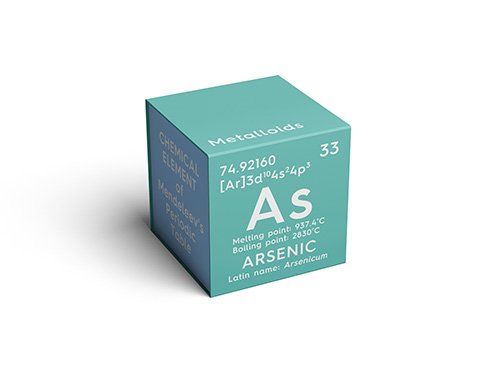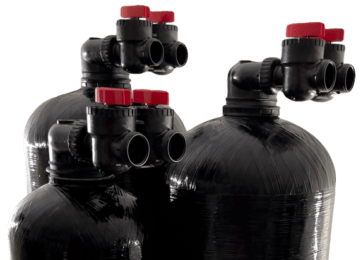
Arsenic
 OVERVIEW AND TREATMENT OPTIONS:
OVERVIEW AND TREATMENT OPTIONS:
Arsenic is a metalloid element that is found naturally in rocks, soil, and plants. Most forms of this element are extremely toxic to humans. The source of arsenic in water is often from natural deposits in the ground that contaminant aquifers and wells, but can also be a direct cause of poor industrial and agricultural practices. If you get your water from a private well source, it’s always important to have it tested annually ensuring that your water is safe to consume.
SOURCES
Arsenic occurs naturally in soil and bedrock . It can also be present due to the use of land by people and industrial activities. Arsenic has been used in pesticides and as a preservative for wood. The use of arsenic in pesticides has largely been discontinued, but there is still the possibility that arsenic has built up in the soil where it was once used.

HEALTH CONCERNS
Arsenic is poisonous and drinking it can be deadly. Exposure has been known to cause headaches, drowsiness, diarrhea and vomiting, and discoloration of the skin and fingernails. Chronic exposure may lead to severe stomach pain, numbness in the extremities, convulsions, paralysis, and blindness. The EPA and scientific committees have classified arsenic as a human cancer-causing agent. Research indicates that people living in areas where water concentrations are very high are more likely to have bladder, lung, or skin cancer.
Please note that unlike radon , arsenic is not as much of a concern in water for other purposes such as bathing, washing dishes, or other household chores. Arsenic is not absorbed through the skin very easily, and it tends not to become airborne once it’s dissolved in water. This can occur with levels higher than 500 ppb though.
TESTING
You should arrange to have your water tested through a state certified laboratory to determine if arsenic is present in your drinking water supply. Arsenic usually occurs in two forms: trivalent arsenic III or a pentavalent arsenic V. Both are harmful to humans with Arsenic III being more harmful and more difficult to remove. A speciation test is normally performed to determine the arsenic type present in the water supply. BWS offers the HM-XR SERIES which is effective at removing both forms of arsenic therefore saving the expense of an added speciation test.
TREATMENT
Removal of arsenic from well water can be a complicated process. There are several treatment approaches and technologies available to remove arsenic from well water. They include METAL OXIDE FILTERS, REVERSE OSMOSIS SYSTEMS. But note that the chemical parameters of your water and the chemistry of the arsenic that is present will dictate which approach will work most effectively at removing the arsenic. The BWS preferred treatment approach would be using our HM-XR Filters.

